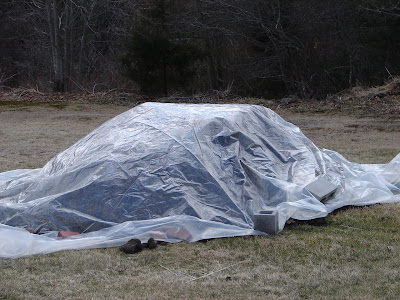
Mint has to be the easiest herb to grow. It will grow in all conditions (just needs some sun) and doesn't need to be watered once it is established. The only tricky part is figuring out where to put it. Mint is extremely invasive. One little plant will take over a huge space in just a year or two if it is not contained.
The picture above shows some mint near my back patio. I didn't care about the mint taking over (and you can see that it did!) because this area was previously unused and next to some stairs and a path. We harvest mint constantly from spring until frost and enjoy it in many recipes. You can put a few leaves in your tea (it is especially good in iced tea), or add to ice cream. Mint is a nice garnish and a few leaves will sweeten a salad. We also enjoy mint in mixed drinks.
Mint Julep is super easy to make. Just add an ounce of Kentucky Bourbon to a glass full of ice. Then add an ounce of simple syrup and mix. Garnish with a sprig of mint. Just in time for the Kentucky Derby. Don't forget your hat! I've also seen recipes where powdered sugar and water is used instead of simple syrup and the mint leaves are muddled, which is nice as well.
Mojitos are also an excellent way to enjoy mint. Just take a glass full of ice, add a shot of rum, a teaspoon of sugar and half an ounce of lime juice. Add a dozen or so mint leaves and muddle. Add two ounces of soda and mix. Very refreshing on a summer day!

















